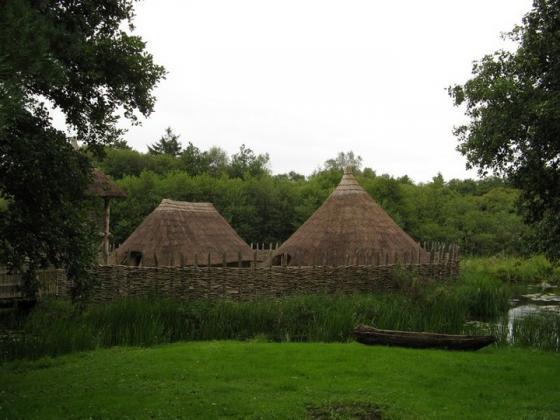According to TJ Westropp’s 1916 ‘Antiquities of Limerick and its neighbourhood’ Magh Adhair is a well preserved place of ancient repute and ceremonial... Legend mentions Adhar son of Umor, brother of Aenghus the Firbolg chief...
When the High King, Flann Sionna, invaded Thomond, in 877, he marched ‘to the green of Magh Adhair’ and played chess to insult the Dal gCais, ‘at the very place of inauguration.‘ So offensive. The surrounding inhabitants and the local chiefs were on him before he’d even finished his game. They were too polite to kill him though, and in a Celtic fashion just stole his best poet.
Other records (beside a vague allusion to a pillar) mention a Bile or venerated tree which the High King Maelsechnaill cut down, and had the roots dug out, in AD981, to insult King Brian Boroimhe. Apparently another tree was planted but someone later childishly chopped that down too for similar reasons.
A long succession of Kings of Thomond were inaugurated here down to the reign of Queen Elizabeth, and ‘Iraghts’ of considerable local importance were held, down to the great famine, and were remembered even about 1890. In that year people only recalled besides that the mound was a place where a king was buried...
The mound stands in a small plain, in a natural amphitheatre, formed by a low crag called ‘the Beetle’s Crag’ or Cragnakeeroge, beside the strangely named ‘Hell Bridge’ and ‘Hell River’. There are traces of a semi-circular fence, between which and the mound lies a large block of conglomerate of dull purple, with red and pink pebbles of porphyry and quartz; two basins are ground in it.
An inauguration ceremony took place around 1200 which was (it seems) documented: The carn or mound was palisaded, with a gate, guarded by three chiefs, a fourth alone ascended the carn with Cathal Craoibhdhearg and gave him the whit rod. The other chiefs and the comharbs stood below, holding the Prince’s arms, clothes and horse. He faced the north, and on stepping down from the inauguration stone on the mound, turned round thrice, as is still the custom in Co. Clare on seeing a new moon. He then descended from the mound and was helped to robe and remount.



























